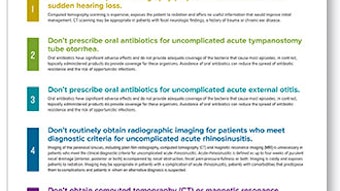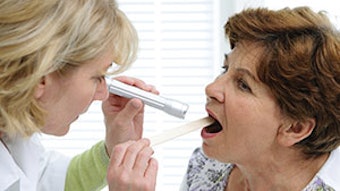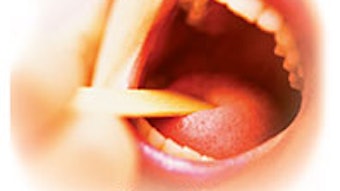SMART TALK FOR PHYSICIANS AND PATIENTSThe do’s and don’ts to a healthy voice
Voice problems are usually associated with hoarseness, which is defined as a disorder characterized by altered vocal quality, pitch, loudness, or vocal effort that impairs communication or reduces voice-related quality of life.1
By Amanda C. Hu, MD, assistant professor, Drexel University, Philadelphia, PA
Voice problems are usually associated with hoarseness, which is defined as a disorder characterized by altered vocal quality, pitch, loudness, or vocal effort that impairs communication or reduces voice-related quality of life.1
If you are unsure if you have a voice problem, ask yourself the following questions:
- Does your voice become hoarse or raspy?
- Does your throat feel raw or achy?
- Is it an effort or strain to talk?
- Do you repeatedly clear your throat?
- Do people regularly ask you if you have a cold when in fact you do not?
- Have you lost your ability to sing the high notes?
Voice problems arise from a variety of sources including voice overuse or misuse, cancer, infection, or injury. Here are some tips to prevent voice problems and to maintain a healthy voice.
DO drink water
Stay well hydrated! Your body needs about six to eight glasses daily to maintain a healthy voice. This water consumption optimizes the throat’s mucous production and aids vocal fold lubrication.
DON’T drink an excessive amount of coffee, tea, soda, or alcohol
These drinks all dehydrate the body and dry out your vocal folds. These drinks will also worsen acid reflux.
DO live a healthy lifestyle
This includes exercise, eating healthy, and getting adequate sleep.
DON’T smoke
Smoking leads to lung or throat cancer. Primary and secondhand smoke can cause significant irritation and swelling of the vocal cords. This will permanently change your voice quality.
DO warm up your voice before heavy voice use
You should warm up your singing voice before giving a performance and your speaking voice before giving a speech, preaching, or teaching a class. Warm-ups can be simple, such as gently gliding from low to high tones on different vowel sounds, doing lip trills (like the motorboat sound that kids make), or tongue trills.
DON’T abuse or misuse your voice
Avoid habitual yelling, screaming, or cheering. Try not to talk loudly in locations with significant background noise.
DO use a vocal amplification system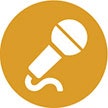
If you routinely need to speak in a loud environment or give a long speech, using a vocal amplification system like a microphone may help prevent vocal damage.
DON’T clear your throat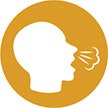
Clearing your throat can be compared to slapping or slamming the vocal folds together. Consequently, excessive throat clearing can cause vocal fold injury and subsequent hoarseness. An alternative to throat clearing is taking a small sip of water or simply swallowing to clear the secretions from your throat.
DO use good breath support
The lungs are the power behind the voice. Take the time to fill your lungs before starting to talk, and don’t wait until you are almost out of air before taking another breath to power your voice.
And most importantly, DO listen to your voice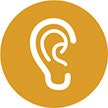
When your voice is complaining to you, listen to it. Modify and decrease your voice use if you become hoarse in order to allow your vocal folds to recover. Pushing your voice when it is already hoarse can lead to significant problems.
If your voice is hoarse frequently, or for an extended period of time, an otolaryngologist should evaluate you. There are many medical conditions that can cause hoarseness, like infections, reflux, overuse, and cancer.
Reference
- Schwartz SR, Cohen SM, Dailey SH, et al. Clinical practice guidelines: hoarseness (dysphonia). Otolaryngol Head Neck Surg. 2009;141(3 Suppl 2):S1-S31.
